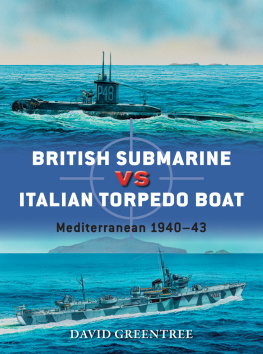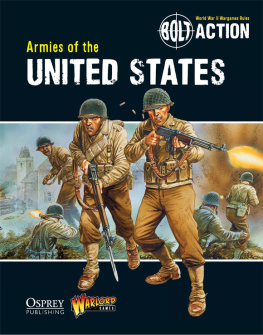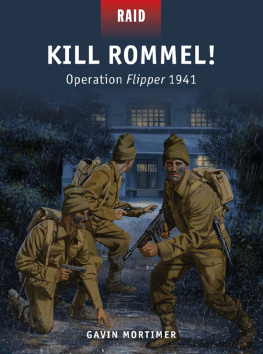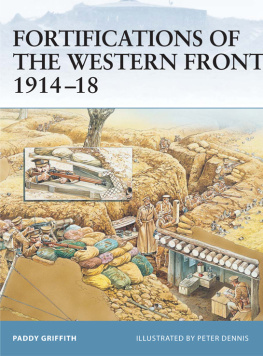Dennis Peter - The Solomons 1943-44 : The Struggle for New Georgia and Bougainville.
Here you can read online Dennis Peter - The Solomons 1943-44 : The Struggle for New Georgia and Bougainville. full text of the book (entire story) in english for free. Download pdf and epub, get meaning, cover and reviews about this ebook. City: London, year: 2018, publisher: Osprey, genre: History. Description of the work, (preface) as well as reviews are available. Best literature library LitArk.com created for fans of good reading and offers a wide selection of genres:
Romance novel
Science fiction
Adventure
Detective
Science
History
Home and family
Prose
Art
Politics
Computer
Non-fiction
Religion
Business
Children
Humor
Choose a favorite category and find really read worthwhile books. Enjoy immersion in the world of imagination, feel the emotions of the characters or learn something new for yourself, make an fascinating discovery.

- Book:The Solomons 1943-44 : The Struggle for New Georgia and Bougainville.
- Author:
- Publisher:Osprey
- Genre:
- Year:2018
- City:London
- Rating:3 / 5
- Favourites:Add to favourites
- Your mark:
- 60
- 1
- 2
- 3
- 4
- 5
The Solomons 1943-44 : The Struggle for New Georgia and Bougainville.: summary, description and annotation
We offer to read an annotation, description, summary or preface (depends on what the author of the book "The Solomons 1943-44 : The Struggle for New Georgia and Bougainville." wrote himself). If you haven't found the necessary information about the book — write in the comments, we will try to find it.
The Solomons 1943-44 : The Struggle for New Georgia and Bougainville. — read online for free the complete book (whole text) full work
Below is the text of the book, divided by pages. System saving the place of the last page read, allows you to conveniently read the book "The Solomons 1943-44 : The Struggle for New Georgia and Bougainville." online for free, without having to search again every time where you left off. Put a bookmark, and you can go to the page where you finished reading at any time.
Font size:
Interval:
Bookmark:



The ultimate objective of the American campaign in the Solomon Islands was the neutralization or seizure of the major Japanese stronghold of Rabaul on the island of New Britain in the Bismarck Archipelago. The Japanese captured Rabaul in January 1942 and quickly turned it into their most important base in the South Pacific. Rabaul possessed a magnificent natural harbor and a complex of airfields. In the hands of the Japanese, it represented a potential springboard against the sea lines of communications (SLOC) between the United States and Australia, and potentially even against Australia itself. Defensively, Rabaul provided the Japanese with a solid position which blocked any Allied move against the Philippines and provided defensive depth to the Imperial Japanese Navys (IJN) major Central Pacific base at Truk Atoll.

The Central and Northern Solomons, June 30, 1943
As early as July 1942, the Americans began to execute a plan to capture Rabaul. By this point, the threat of a major Japanese offensive deep into the South Pacific to cut Allied SLOCs by seizing the Fiji and Samoa Islands and the island of New Caledonia in the New Hebrides had been eliminated in the aftermath of major Allied victories at the Battle of the Coral Sea in May and Midway in June 1942. The American victory at Midway in particular had blunted the IJNs offensive power and forced the cancellation of planned attacks into the South Pacific, and enabled the Americans to put into place their plan to begin the advance against Rabaul.
The orders issued on July 2 by the US Joint Chiefs divided the campaign into three phases. The initial phase was to seize Tulagi and Guadalcanal Islands in the southern Solomons. The second phase called for the capture of the remainder of the Solomons and the northeastern part of New Guinea. The final phase was the capture of Rabaul itself.
Phase one proved difficult and lengthy. The Americans landed the 1st Marine Division on Tulagi and Guadalcanal on August 7. The landing brought an immediate response from the Japanese and a six-month grinding battle of attrition ensued. Tulagi was quickly captured, but Guadalcanal and its critical airfield became the scene of vicious fighting, both on land and at sea. The Americans did not possess any real measure of naval or air superiority over the Japanese at the start of the campaign. This, in combination with an uncertain logistical base, prolonged the campaign well past expectations. Both sides poured in more forces, but the Japanese were never able to seize the airfield or suppress it for any prolonged period, which meant that they could never move sufficient ground forces to the island. This meant the airfield stayed in American hands which gave them the advantage and eventual victory. In the course of the campaign, six major naval actions were fought around the island with both sides suffering significant losses. Growing control of the air and sea around the island allowed the Americans to reinforce the garrison with another Marine division and two Army divisions. This force was able to expel the Japanese from the island in early February 1943.
By the end of the Guadalcanal campaign, the situation in the South Pacific had been significantly altered. The growing power of the US Navy was fully on display with a growing number of war-built ships reaching the Pacific. American airpower, which provided the difference in the campaign, was firmly in control of the airspace over the southern Solomons and beginning to execute raids against Japanese bases in the Central Solomons and even against Rabaul itself. In comparison, the IJN had suffered such severe losses that it felt compelled to disengage from the Guadalcanal campaign to save itself for a future decisive battle fought under better conditions. The IJNs air power, both carrier and land based, was also severely attrited and was never again the factor it had been earlier in the war. The Imperial Japanese Army (IJA) committed some 31,400 men to the island of which only 11,400 were evacuated. The Japanese ability to contest a renewed American advance into the central and northern Solomons had been severely degraded.

Henderson Field on Guadalcanal, shown here in August 1942, was the focal point of the Guadalcanal campaign, which lasted six months. The airfields in the Central Solomons had the same importance, which meant that the next phase of the Solomons campaign was centered on Munda Airfield on New Georgia. (Naval History and Heritage Command)
Concurrent with the fighting on Guadalcanal, there was another bitter campaign being waged on the Papuan Peninsula of New Guinea. Following the Japanese defeat in the Coral Sea, which thwarted their attempt to seize the Allied base of Port Moresby by sea, a small IJA force landed at Buna on the northeastern coast of the peninsula and tried to seize Port Moresby by a land attack. The attack lacked proper logistical support and was mounted over some of the most rugged terrain in the world. Not surprisingly, the attack faltered, and the Americans and Australians were able to deploy additional forces to secure the Papuan Peninsula. The campaigns in Papua and the Solomons were linked throughout 1942 and 1943. Rabaul was the primary Japanese support hub for both operations, and Japanese naval and air forces operating from Rabaul and other nearby bases had the ability to intervene in either area. The same IJA command supplied forces for both and was increasingly hard-pressed to do so, forcing the Japanese to make tough decisions about which campaign to support.
The drive on Rabaul was complicated from the Allied perspective by the fact that it was fought at the seam of the two major commands of the Pacific War. In March 1942, by agreement among the Allied nations operating in the area, as well as between the US Navy and the US Army which often had a difficult relationship, especially when it came to establishing which service had ultimate control over an area or operation, two large commands were set up to conduct the war in the Pacific. The area covering Australia, New Guinea, New Britain, and most of the Solomons was the responsibility of the Southwest Pacific Area. This was under the command of Army General Douglas MacArthur, who was based in Australia. The rest of the Pacific Theater was the purview of Admiral Chester W. Nimitz in his capacity as Commander in Chief of the Pacific Ocean Areas. Being so large, Nimitzs command was divided into three parts, the South, Central, and North Pacific Areas. The South Pacific Area included the SLOCs between the United States and Australia and the remainder of the Solomons. Nimitz did not exercise direct control of the South Pacific Area. Since October 1942, that was the responsibility of Vice Admiral William F. Halsey. Friction between the US Navy and the US Army was endemic throughout the war, but relations during the upcoming Solomons campaign were fairly good due to the mutual respect between Halsey and MacArthur.
The Solomons campaign was the first opportunity for the Americans to put into practice an island-hopping strategy. If successful, it had the potential to disrupt the Japanese defensive strategy of making the Americans fight for every island on the long road to Japan. The American campaign in the Solomons also featured triphibious warfare in which air, ground, and naval forces had to be carefully synchronizeda prerequisite for a successful drive across the Pacific. The Japanese, having lost the initiative at Guadalcanal, were forced on the strategic defensive. While holding no illusions they could stop the American drive into the Solomons, they had every intention of delaying the Americans for as long as possible while inflicting the maximum number of casualties. The Solomons campaign was a fascinating case study of joint operations fought over some of the most difficult terrain in the world against a determined defender.
Font size:
Interval:
Bookmark:
Similar books «The Solomons 1943-44 : The Struggle for New Georgia and Bougainville.»
Look at similar books to The Solomons 1943-44 : The Struggle for New Georgia and Bougainville.. We have selected literature similar in name and meaning in the hope of providing readers with more options to find new, interesting, not yet read works.
Discussion, reviews of the book The Solomons 1943-44 : The Struggle for New Georgia and Bougainville. and just readers' own opinions. Leave your comments, write what you think about the work, its meaning or the main characters. Specify what exactly you liked and what you didn't like, and why you think so.












